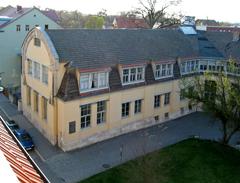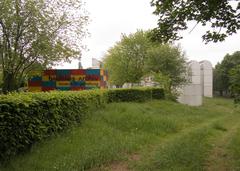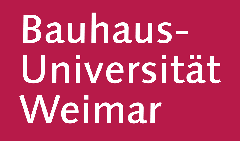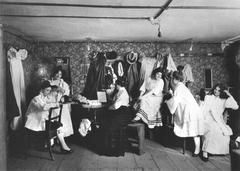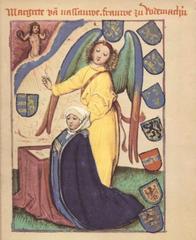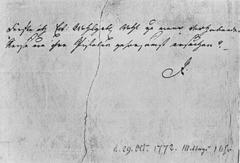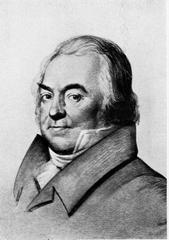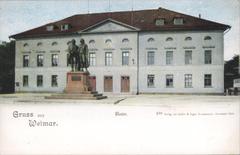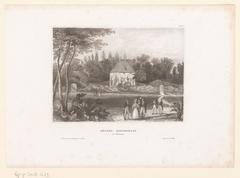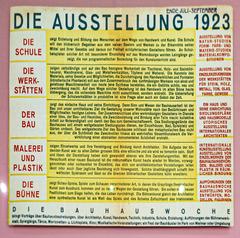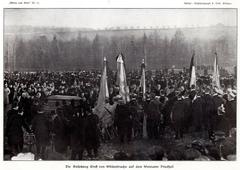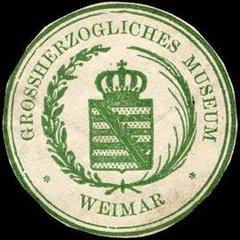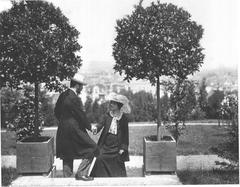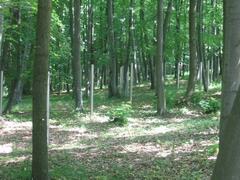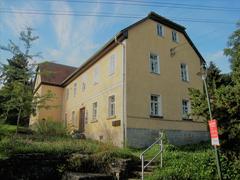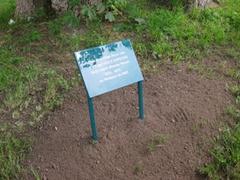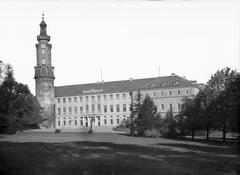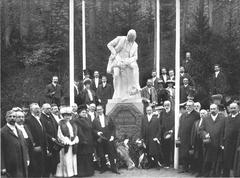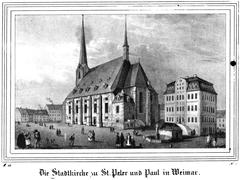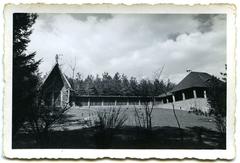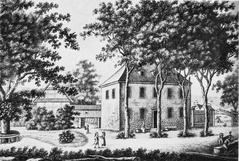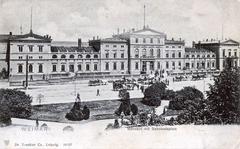Goethe House Weimar: Visiting Hours, Tickets, and Historical Sites Guide
Date: 14/06/2025
Introduction
The Goethe House (Goethes Wohnhaus) in Weimar, Germany, is an essential destination for literature lovers, history enthusiasts, and cultural travelers. As the long-time residence of Johann Wolfgang von Goethe—one of Germany’s greatest literary figures and a central figure of the German Enlightenment and Weimar Classicism—the house offers an immersive journey into the world that shaped his creative genius. Today, meticulously preserved and part of the UNESCO World Heritage ensemble “Classical Weimar,” the Goethe House stands as a testament to the intellectual and artistic flourishing of late 18th and early 19th-century Germany.
This guide provides comprehensive information for planning your visit, including opening hours, ticket options, accessibility, guided tours, and highlights of nearby attractions. Whether you are a first-time visitor or a returning admirer, you’ll find practical tips to enrich your experience and deeper insights into Goethe’s enduring legacy.
For the latest visitor details and ticket bookings, consult the official Klassik Stiftung Weimar website and WhichMuseum.
Table of Contents
- Introduction
- Historical Overview
- Visiting Information
- Museum Highlights
- Nearby Weimar Historical Sites
- Frequently Asked Questions (FAQ)
- Conclusion
- References
Historical Overview
Early History and Goethe’s Arrival
The Goethe House was originally constructed between 1707 and 1709 as a Baroque residence on Weimar’s Frauenplan square. Its elegant exterior reflected the architectural trends of early 18th-century Germany. Johann Wolfgang von Goethe moved in as a tenant in 1782 at the invitation of Duke Carl August of Saxe-Weimar-Eisenach, marking the beginning of a golden era for Weimar’s cultural scene.
Goethe’s Transformation of the House
In 1792, the ducal chamber purchased the house and presented it to Goethe, who then reimagined the interiors in line with his classical ideals. Inspired by his travels and intellectual pursuits, Goethe redesigned the rooms to foster both creativity and social exchange. The famous “Yellow Room” became a salon for discussions among Germany’s literary and intellectual elite.
The House as a Creative and Scientific Hub
Goethe’s residence became the heart of his creative and scientific activities. Here, he penned parts of “Faust” and “Wilhelm Meister’s Apprenticeship” and cultivated an extensive collection of art, manuscripts, minerals, and botanical specimens. The garden, expanded in 1817, was both a place of inspiration and a laboratory for his botanical experiments.
Museum Founding and UNESCO Status
After Goethe’s death in 1832, the house remained in his family until 1885, when it was transferred to the state and opened as the Goethe National Museum. In 1998, it was recognized as part of the UNESCO World Heritage “Classical Weimar” ensemble, underscoring its global cultural significance (whichmuseum.com).
Visiting Information
Opening Hours
- April to October: Tuesday–Sunday, 9:30 am–6:00 pm
- November to March: Tuesday–Sunday, 9:00 am–6:00 pm
- Closed: Mondays (except public holidays)
- Last admission: 30–60 minutes before closing; verify on the official website for seasonal updates.
Ticket Prices and Booking
- Adults: €8 (Goethe House only)
- Reduced: €5 (students, seniors)
- Children under 12: Free
- Combination Tickets: Available for Goethe House and other Weimar museums
- Weimar Card: Offers free or discounted entry to multiple sites and public transport for 48 hours (weimar.de)
- Booking: Strongly recommended online, especially during peak seasons (destinationtheworld.co)
Accessibility and Facilities
- Accessibility: The historic house has limited wheelchair access due to original staircases; adjacent museum building is accessible. Contact Klassik Stiftung Weimar for tailored assistance.
- Restrooms: Modern, accessible toilets available within the museum complex.
- Cloakroom: Lockers and a staffed cloakroom for coats, bags, and umbrellas.
- Museum Shop: Offers Goethe-related books and souvenirs (weimar.de).
- Cafés: Nearby restaurants serve local Thuringian cuisine.
Getting There
- Address: Frauenplan 1, 99423 Weimar
- By Train: Weimar is directly connected to major cities; the Goethe House is a 20-minute walk or a short bus ride (Bus No. 1) from the station (destinationtheworld.co).
- By Car: Public parking available in the city center.
- On Foot: The city center is compact and walkable, with clear signage.
Guided Tours and Interpretation
- Guided Tours: Available in several languages through Tourist Information Weimar; typically last 1–1.5 hours.
- Audio Guides: Multilingual audio guides available for self-guided visits.
- Printed Materials: Bilingual information panels (German/English) throughout the house and museum.
Visitor Tips
- Advance Booking: Recommended for tickets and guided tours, especially during weekends and holidays.
- Photography: Generally prohibited inside historic rooms; permitted in gardens and some exterior areas.
- Visit Duration: Allow 1.5–2 hours to explore the house and museum fully.
- Best Times: Early mornings or late afternoons are less crowded.
- Families: Educational materials and family guides may be available.
- Seasonal Events: Check the Klassik Stiftung Weimar events calendar for exhibitions and special programs.
Museum Highlights
Key Rooms and Collections
- Goethe’s Study: Preserved with his writing desk, books, and scientific instruments.
- Yellow Room: Social salon for literary and intellectual gatherings.
- Private Quarters: Family rooms with period furnishings and personal items.
- Garden and Pavilions: Reflect Goethe’s passion for botany and natural sciences.
Special Exhibitions and Events
- Permanent Exhibition: “Lebensfluten – Tatensturm” explores Goethe’s life and influence.
- Goethe-Apparat: Interactive digital exhibit offering a virtual tour of Goethe’s study (fromplacetoplace.travel).
- 2025 “Faust” Anniversary: Citywide installations and manuscript displays (klassik-stiftung.de).
Nearby Weimar Historical Sites
- Schiller’s House: Home of Friedrich Schiller, another titan of German literature.
- Duchess Anna Amalia Library: Renowned for its stunning Rococo Hall and literary treasures.
- Wittumspalais: Former residence of Duchess Anna Amalia.
- Bauhaus Museum Weimar: A short walk away, highlighting Weimar’s modernist legacy.
- Park an der Ilm: Landscaped park co-designed by Goethe, ideal for a reflective stroll.
Combination tickets and the Weimar Card make exploring multiple sites economical and convenient (destinationtheworld.co).
Frequently Asked Questions (FAQ)
Q: What are the Goethe House visiting hours?
A: Tuesday to Sunday; 9:30 am–6:00 pm (April–October), 9:00 am–6:00 pm (November–March); closed on Mondays except public holidays.
Q: How do I buy Goethe House tickets?
A: Purchase online at the Klassik Stiftung Weimar website or at the ticket office. Booking in advance is advised.
Q: Is the Goethe House accessible for disabled visitors?
A: The historic building has limited accessibility. The adjacent museum is accessible; contact staff in advance for accommodations.
Q: Can I take photos inside the Goethe House?
A: Photography is generally not permitted inside to protect sensitive materials. Exterior and garden photography is allowed.
Q: Are guided tours available?
A: Yes, through Tourist Information Weimar in multiple languages.
Q: What nearby attractions can I visit?
A: Schiller’s House, Duchess Anna Amalia Library, Wittumspalais, Bauhaus Museum, and Park an der Ilm are all within walking distance.
Conclusion
A visit to the Goethe House in Weimar is a journey into the heart of German cultural history. From the meticulously preserved rooms where Goethe composed his masterpieces to the tranquil gardens that fueled his scientific curiosity, every aspect of the museum invites reflection and discovery. With detailed visitor information, accessible facilities, insightful tours, and proximity to other cultural landmarks, the Goethe House is a cornerstone of any Weimar itinerary.
For the best experience, book your tickets in advance, explore combination passes, and check for seasonal events or special exhibitions. Enhance your visit with the Audiala app for guided audio tours and the latest updates. Immerse yourself in the legacy of Goethe and the spirit of Weimar Classicism.
For the most up-to-date visitor details, ticket prices, and event schedules, always consult the official Goethe House and Klassik Stiftung Weimar website.
References
- Visiting the Goethe House in Weimar: Hours, Tickets, and Historical Insights, 2025, Klassik Stiftung Weimar (https://www.klassik-stiftung.de/en/goethe-national-museum/the-goethe-residence/)
- Visiting Goethe House in Weimar: Hours, Tickets & Cultural Highlights, 2025, WhichMuseum (https://whichmuseum.com/museum/goethe-s-garden-house-weimar-25411)
- Goethe-Nationalmuseum Visiting Hours, Tickets & Guide to Weimar’s Historical Gem, 2025, FromPlaceToPlace.Travel (https://fromplacetoplace.travel/germany/thuringia/weimar/goethes-residence-in-weimar/)
- Goethe House Visiting Hours, Tickets, and Visitor Guide to Weimar’s Historic Landmark, 2025, DestinationTheWorld (https://destinationtheworld.co/best-things-to-do-in-weimar/)
